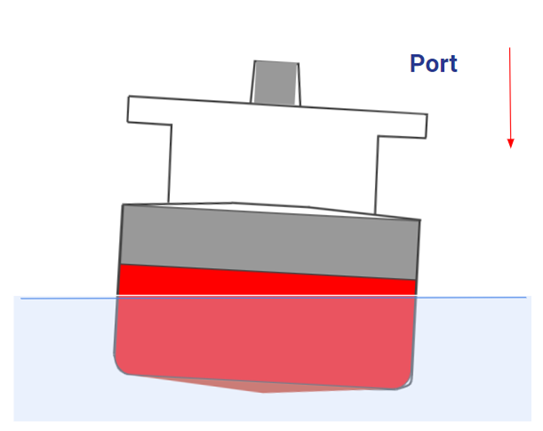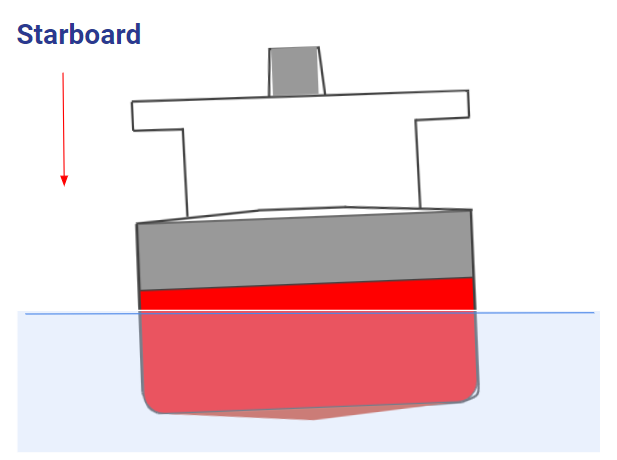1.1 List
List and Listing on Merchant Vessels
In normal operating conditions, a vessel floats and navigates on a lateral even keel.

Lateral listing describes a difference between the portside and starboard side drafts when the vessel is leaning to one side or the other at an angle measured in degrees.
Listing is due to an uneven distribution of weight or external forces. This can significantly impact a vessel’s stability and maneuverability, posing a serious safety risk.
When a vessel is tilting to the left side (looking forwards on the ship), we say she is listing to port.

When a vessel is tilting to the right (looking forwards on the ship), we say she is listing to starboard.

Causes of Lateral Listing:
- Cargo Distribution: Uneven stowage of cargo can create a list. Heavy items on one side without counterbalancing weight on the other can cause the vessel to lean.
- Free Surface Effect: Liquids in partially filled tanks can slosh around, creating a dynamic force that can cause listing.
- Heeling Moment: External forces like wind, waves, or currents can create a heeling moment, causing the vessel to lean.
- Damage or Flooding: Structural damage or flooding can lead to uneven buoyancy, resulting in listing.
Consequences of Lateral Listing:
- Reduced Stability: Listing reduces a vessel’s stability, making it more susceptible to capsizing.
- Impaired Maneuverability: Listing can affect a vessel’s ability to steer and respond to commands.
- Increased Stress on Hull and Equipment: The uneven loading can cause increased stress on the hull, machinery, and other components.
- Safety Risks: Listing can pose a serious safety risk to the crew and passengers, as well as to the vessel itself.
Prevention and Mitigation:
- Proper Cargo Stowage: Ensure cargo is distributed evenly to avoid excessive list.
- Free Surface Control: Minimize free surface effects by keeping tanks full or nearly empty.
- Ballast Water Management: Use ballast water to correct list and maintain stability.
- Regular Inspections: Conduct regular inspections to identify potential listing issues.
- Emergency Procedures: Develop and practice emergency procedures to address listing situations.